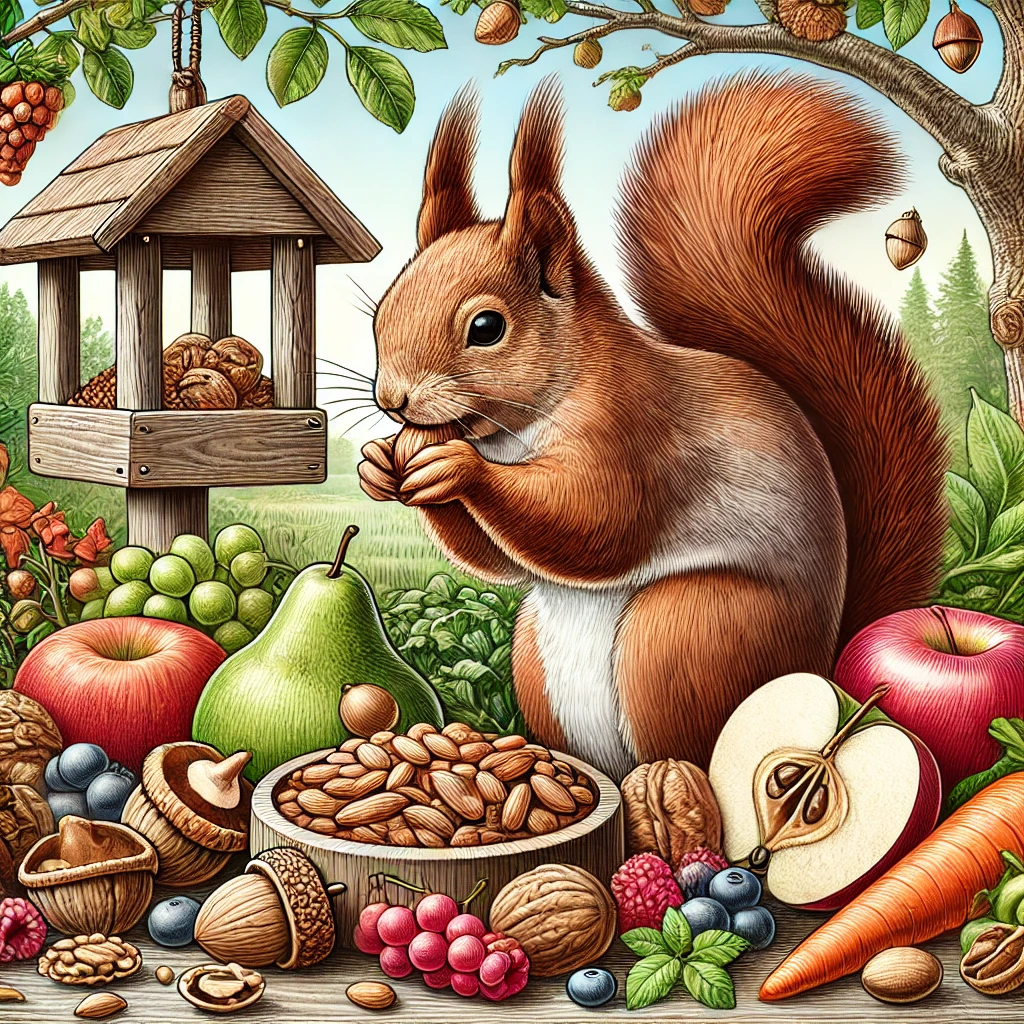What Do I Feed Squirrels? A Guide to Feeding Squirrels Safely
Feeding squirrels can be an enjoyable way to connect with nature. These curious, agile creatures are omnivores with varied diets, so knowing what to feed them is key to ensuring their health and well-being. In this guide, we’ll explore what foods are safe for squirrels, how to feed them responsibly, and foods to avoid.
1. What Do Squirrels Eat in the Wild?
In their natural habitats, squirrels eat a balanced diet that includes seeds, nuts, fruits, fungi, and occasionally small animals. Their varied diet helps them get the nutrients they need for energy, growth, and survival. Here’s a breakdown of their natural foods:
- Nuts: Squirrels love acorns, walnuts, almonds, pecans, and hazelnuts.
- Seeds: They eat seeds from plants like sunflowers, pumpkins, and pinecones.
- Fruits and Vegetables: Wild berries, apples, grapes, and even small amounts of leafy greens make up a part of their diet.
- Fungi: Squirrels eat mushrooms and fungi found on trees and forest floors.
- Protein Sources: Occasionally, squirrels may consume bird eggs, insects, or small animals.
This natural diet supports their nutritional needs and ensures they have the energy needed for foraging, climbing, and nesting.
2. What Can You Feed Squirrels?
If you want to supplement their diet, focus on foods that align with their natural preferences. Here are some healthy options to consider:
a. Nuts in the Shell
Offering nuts in the shell is beneficial for squirrels because it provides both mental stimulation and exercise as they work to crack them open. Some suitable options include:
- Acorns, walnuts, pecans, and hazelnuts: These are all part of a squirrel’s natural diet and are excellent sources of fats and proteins.
Note: Avoid giving squirrels peanuts in large quantities. While peanuts are fine in moderation, they do not provide the same nutritional benefits as tree nuts.
b. Seeds and Grains
Seeds are a favorite among squirrels and provide them with essential nutrients. Some good options include:
- Sunflower seeds: These can be given in small amounts as a treat, though they shouldn’t be the primary food due to their high-fat content.
- Pumpkin seeds: Squirrels enjoy pumpkin seeds, and they are high in protein and fiber.
Tip: Consider buying birdseed mixes with minimal filler (such as corn) for squirrels, as corn is nutritionally low and not ideal as a primary food source.
c. Fresh Fruits
Fruits offer squirrels hydration, fiber, and natural sugars, which they enjoy, especially in the warmer months. Some safe fruits for squirrels include:
- Apples: Cut into small pieces, making sure to remove seeds.
- Blueberries, blackberries, and strawberries: These are small and safe to offer.
- Grapes: Feed in moderation, as they contain a high sugar content.
Note: Avoid fruits with high acidity like oranges, as they can upset a squirrel’s stomach.
d. Vegetables
Fresh vegetables are excellent for squirrels, especially in the winter when other food sources are scarce. Leafy greens and certain root vegetables provide important nutrients.
- Carrots: High in fiber, beta-carotene, and safe for squirrels.
- Kale and spinach: These leafy greens are nutrient-dense and beneficial in small amounts.
- Zucchini and squash: They enjoy these vegetables, and they provide hydration.
3. Foods to Avoid When Feeding Squirrels
While many foods are safe for squirrels, some can harm them. Here are some foods to avoid:
- Sugary and Processed Foods: Foods like candy, chocolate, and processed snacks can be toxic or cause digestive issues.
- Salty Foods: Squirrels cannot process salt well, so avoid salted nuts or snacks.
- Bread and Baked Goods: These can lead to malnutrition and digestive issues.
- Corn: While squirrels may eat corn, it is low in nutrition and often treated with pesticides. Avoid feeding them corn, especially in large amounts.
- Avocado: The skin and pit are toxic to squirrels and should never be offered.
- Junk Foods: Chips, cookies, and fast food can lead to severe health issues in squirrels.
4. Tips for Feeding Squirrels Responsibly
Feeding squirrels can be a delightful experience, but there are best practices to follow:
- Avoid Overfeeding: Squirrels should still forage for their own food to maintain their instincts and natural behavior.
- Use a Feeder: Placing food in a squirrel feeder rather than on the ground keeps food safe from contamination and attracts squirrels to a safe location.
- Offer Small Quantities: Place only a small amount of food at a time, so it does not attract pests or other wildlife that may disrupt the area.
- Keep Water Available: Fresh water is essential, especially during hot weather. Offering a shallow water bowl can help keep squirrels hydrated.
- Feed Seasonally: In the winter, squirrels need more high-calorie foods to maintain energy. In warmer months, reduce the quantity and frequency of food to avoid dependency.
5. Homemade Squirrel Treat Ideas
If you enjoy crafting treats for wildlife, consider these simple recipes that provide healthy food for squirrels:
- Nut Mix: Combine unsalted walnuts, almonds, and hazelnuts in a small container to create a nutritious mix. Offer in moderation to prevent overfeeding.
- Fruit and Nut Treats: Mix small pieces of apple, grape, and a handful of seeds for a special treat.
- Nut Butter Spread: Spread a thin layer of unsalted, unsweetened peanut butter on a small piece of tree bark. This gives squirrels a fun activity as they work to lick the peanut butter.
Conclusion: Feeding Squirrels Mindfully
Feeding squirrels can be a fun and rewarding activity, but it’s essential to provide safe, nutritious food that aligns with their natural diet. By choosing foods like unsalted nuts, fresh fruits, and seeds, you can help squirrels stay healthy and active. Remember to avoid processed and sugary foods, and always feed in moderation. With these guidelines, you can enjoy watching these lively creatures while supporting their well-being.






